BookBuzz book glossary
Our glossary makes shopping for books easier by explaining book-related terms and jargon. Discover definitions for deckle edges, foxing, remainders and other words and phrases from the world of books.
Advance reading copy (ARC)
A copy of a book provided to reviewers and booksellers before publication. Usually softcovers, ARCs are usually uncorrected proofs, which means they may not contain the final approved text.
Annotated edition
A later edition with comments and explanations added by the publisher.
Anthology
A book containing a collection of works such as short stories, poems, essays or plays.
Antiquarian books
A broad term for older, collectible books. This term sometimes describes books published before 1900.
As new
A book condition description. A book in the exact condition as when it was first printed.
Atlas
A book containing a collection of related maps.
Audio book
A book that is listened to. Audio books are now digital files, but they can also appear on cassette, LP and CD.
Autobiography
The story of someone's life written by that person.
Bibliography
Has several meanings. It can be a list of books that an author used for research when writing their book, or a list of books for the study of a particular subject.
Bildungsroman
A work of fiction where the main character progresses from childhood to adult, such as Anne of Green Gables.
Binding
The material used to make the covers of a book.
Biography
The story of someone's life written by another person.
Blurb
A positive comment about a book (often provided by another author) that's printed on the book for promotional purposes.
Board book
A short, illustrated book, intended for babies or toddlers, with thick card pages.
Boards (bds)
The stiff binding that covers a book.
Book club edition (bc, bce)
An edition printed for a large-scale subscription-model book club.
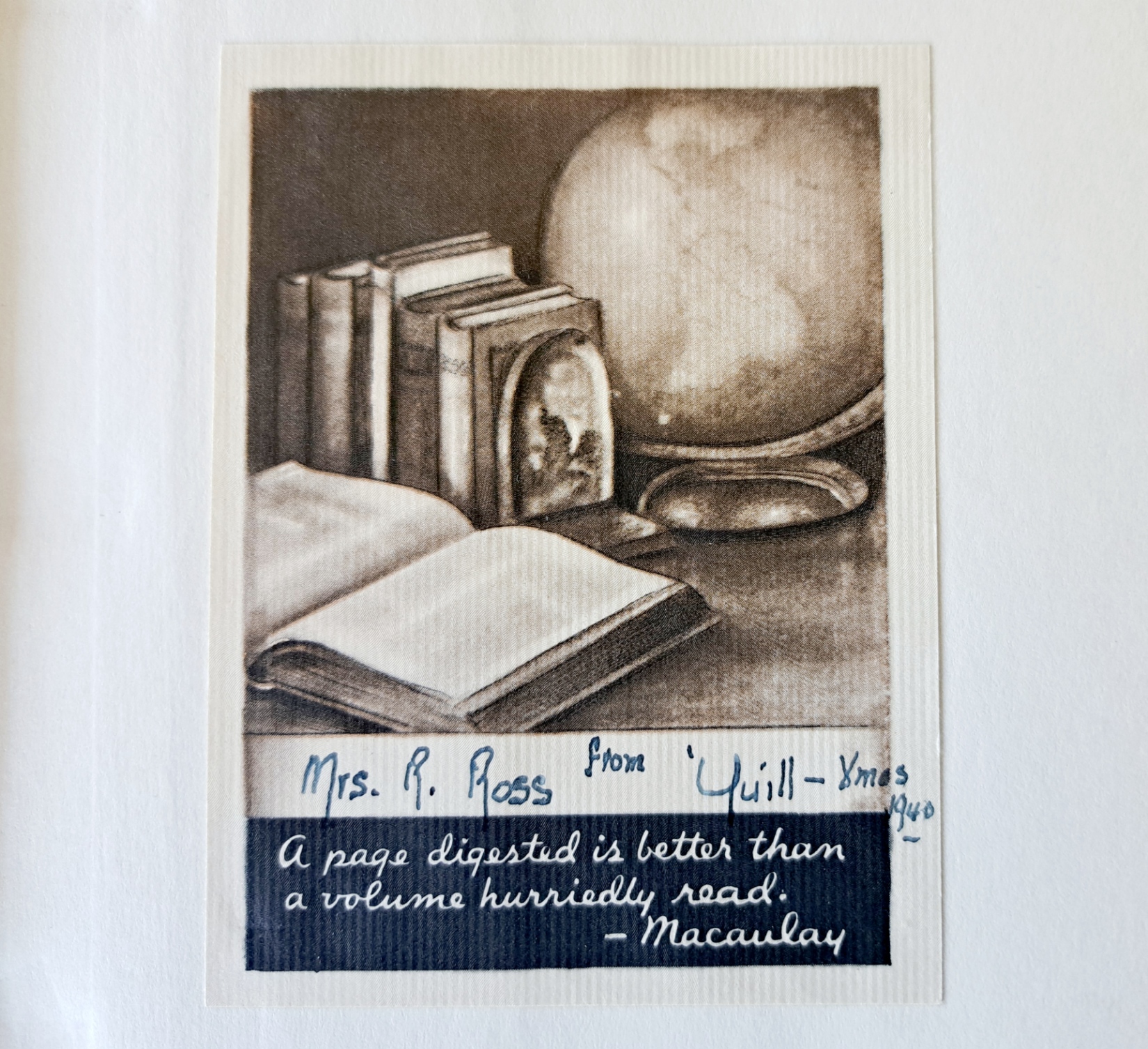
Bookplate (bkpl)
A pasted-in piece of paper that indicates of ownership of a book. Bookplates are often illustrated to reflect the owner's taste in literature or show something about them.
Booktok
TikTok's community of booklovers.
Bowed
When a book's covers bend inwards or outwards.
Brodart cover
Brodart is a firm that manufactures clear protective book covers that are often added to books.
Buyback
When a bookshop or an online seller "buys back" used copies from customers.
Catalogue raisonné
A book that lists all the known artworks by an artist.
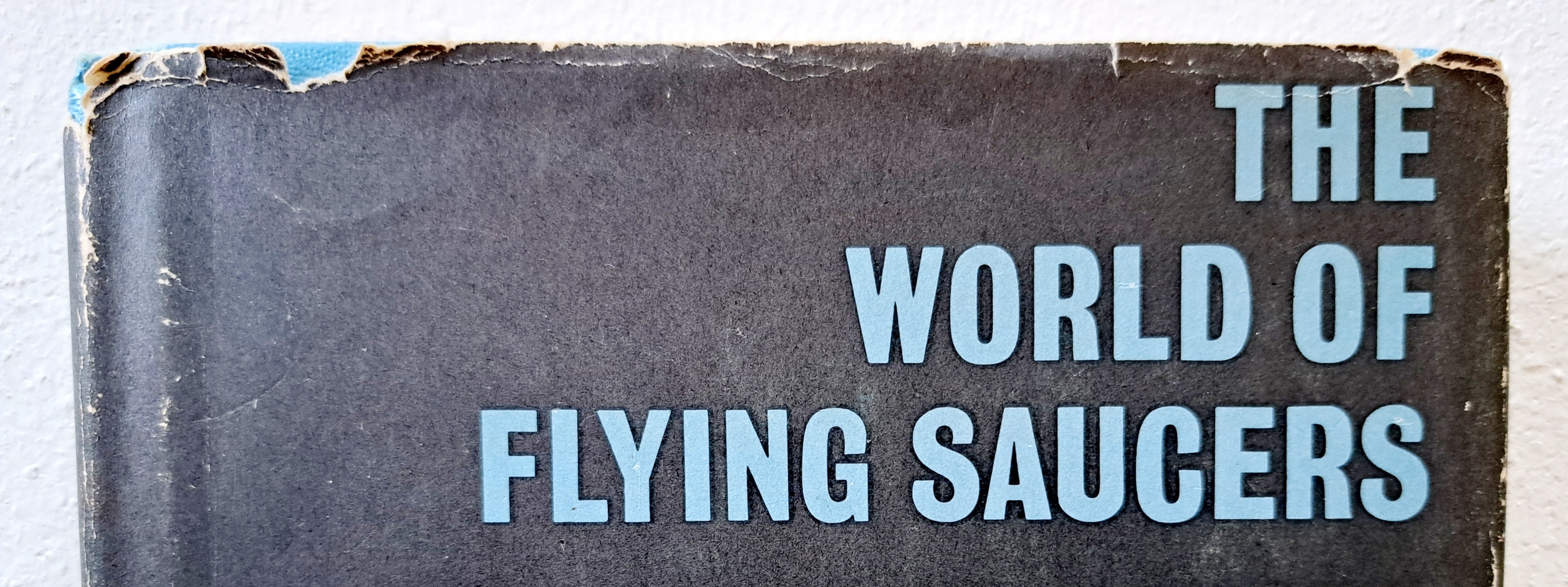
Chipped
When small pieces of the dust jacket have been ripped away.
Cloth
When a book is bound in a textile such as linen.
Cocked
When a book becomes misshaped due to the way it's been stored on a bookshelf.
Copyright page
A page near the front of the book displaying key information such as author, publisher, ISBN, year of publication, edition and copyright details.
Crease
Just like it sounds. When part of a book has been bent or folded.
CreateSpace
A self-publishing service owned by Amazon.
Cuts
Illustrations printed in the middle of the text are called cuts. Illustrations printed on an entire age are plates.
Dampstained
A minor stain on the book caused by moisture.
Deckle edges
When the edges of the pages are uncut or untrimmed, creating an uneven appearance.
Die-cut
Holes in covers or pages added for design value.
Distributor
A company that receives books from publishers and supplies them to bookshops and other retailers. Distributors can also fulfill online orders on behalf of retailers. Ingrams is the largest book distributor in the United States.
Dog-eared
Pages that have been folded over at the corner.
Dos-a-dos
Two separate books bound together in one volume. It means the book has two front covers. Ace paperbacks are an example.
Dropshipping / dropshipper
Also known as arbitrage. This is when someone lists an item for sale on one website that is available on a different website at a lower price from a separate vendor. When the higher priced item is purchased, the dropshipper purchases the cheaper item and gets it shipped by its vendor directly to the customer, who usually unaware of what's happening.
Dust jacket (dj) or Dust wrapper (dw)
The decorative cover wrapped around a book.
E-Book / ebook
A book in a computer file that can be read on an electronic device.
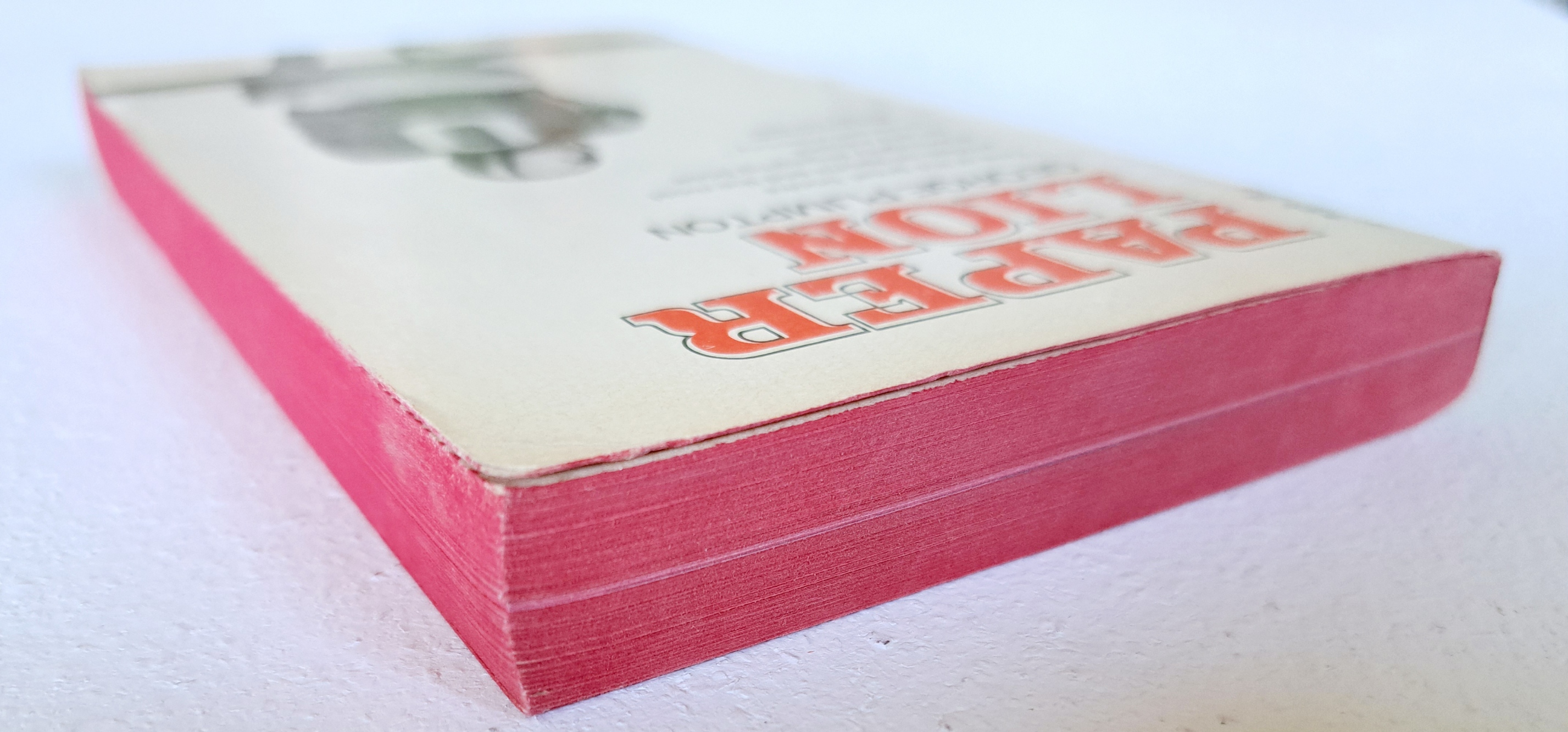
Edges
The outer surface of a book's pages. Top edge, bottom edge, front edge.
Edition (ed)
All the copies of a book produced from the same printing plates.
Elephant folio
Just as it sounds. A large book about 23 inches / 58 cm tall. A double elephant folio is huge at 50+ inches (127 cm) tall.
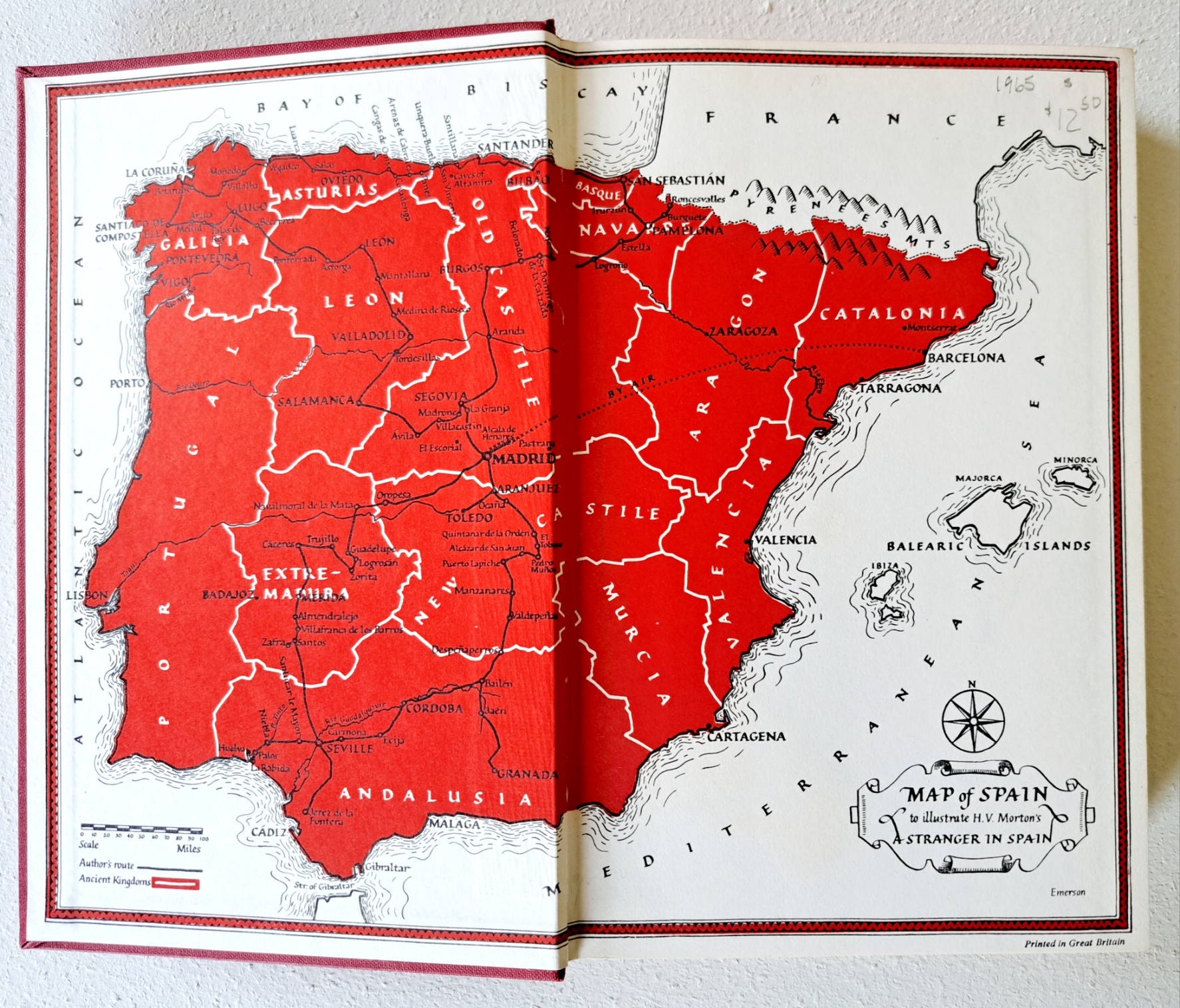
Endpapers (ep)
Sheets of paper pasted onto the inner covers. One side of the sheet is pasted to the inside cover, the other is left free (front free endpaper, ffep, and rear free endpaper, rfep).
Ephemera
Paper objects created to be used for a short time such as concert posters, postcards, maps or magazines.
Ex-library book
A book that once belonged to a public library. They are identified with markings like library stamps or card pockets. They are often stamped with "discarded" or "withdrawn."
Ex-libris
This refers to a bookplate printed with the owner's name or initials, which has been pasted into the book. It's Latin for "From the library of..."
Fading
Book covers that have faded after being exposed to light.
Fair
A book condition description. This is a used book with considerable wear that might be missing its dust jacket.
Facsimile edition
An edition that reproduces an earlier edition of a notable book as closely as possible.
FBA
Fulfillment by Amazon. This is when a seller's inventory is housed at an Amazon warehouse and distributed to customers by Amazon.
Fine (F)
A book condition description. This is a book that has been read but has no defects. Sellers also use Near Fine for a used book with a minor defect.
First edition
The first appearance of an author's work in print. A work can have numerous first editions such as the first paperback edition, first illustrated edition, first American edition etc. The phrase "true first edition" indicates the earliest edition.
First thus
A rather unhelpful phrase. It means not a first edition, but something that is new. The book may be revised, have a new introduction by the author or someone else, or be the first edition issued by another publisher.
First trade edition
An edition of a book produced for general sale, as distinguished from a limited edition.
Flip book
A small, illustrated book that shows motion - such as a person running - when the pages are viewed in quick succession by flicking through.
Folding plates
An illustration (such as a map) that is folded into the book.
Folio
A folio-sized book, which is portrait-shaped and 12 x 19 inches (30 x 48 cm)
Fore-edge
The front edge of the text block, opposite to the spine. They are occasionally painted.
Foxed, foxing
Brown spots on the paper of older books, particularly if they have engraved illustrations, caused by a chemical reaction.
Frontispiece
An illustration at the start of a book, usually facing the title page.
Ghostwriter
A writer who writes a book on behalf of another writer and is not credited.
Gilt (gt)
Gold decoration or lettering. (ge).
Good (g)
A book condition description. The average used book that has wear from being read.
Graphic novel
A book-length narrative told via sequential pictures. Includes non-fiction.
Half cloth
Paper-covered boards with the spine bound in cloth.
Half leather
A book's spine and corners are bound in leather, while the rest of the binding may be cloth or paper. Also called a half binding.
Hard-boiled
A genre of crime fiction with a downbeat tone.
Highlighting
The use of colored markers to draw attention to passages of text. Often found in textbooks.
Hinge
Just like it sounds. The inside area where the cover meets the spine. Joint describes the exterior area.
Hypermodern
Books published within last 10 years or so.
Illumination
When a book's decoration has been applied by hand in gold, silver or colored paint.
Imprint
A publisher. It often refers to a publishing division within a larger parent company. Tor Books is an imprint of Macmillan.
Incunabula
Books printed, not handwritten, before 1501 during the early years of the printing press.
Index
An alphabetical list of names or topics featured in the book with page numbers.
Inscribed (insc)
When a book is signed by the author (or illustrator) with a personalized message.
International edition
A low-cost edition of a textbook that has been published outside the USA. The publishers of international editions generally do not authorize the sale of international editions in the United States or Canada.
ISBN
International Standard Book Number. It's a 10 or 13-digit number that identifies a specific book or an edition of a book (a paperback will have a different ISBN to the hardcover edition). ISBNs have been used since 1970. Searching by ISBN helps you find an exact edition of a particular work.
Jacket
The dust jacket.
Keyword
An online search that searches through all the data associated with a book such as title, author, description and publisher.
Laid In
A letter or other piece of paper inserted into a book (not glued in).
Large print
A book published with large type for visually-impaired readers.
Leaf
A single sheet in a book. Each leaf has two printed pages - one on each side.
Limited edition (Ltd)
When a book's print run is restricted to a small number of copies, often numbered and/or signed by the author.
Literary fiction
Fiction that has artistic merit. Think of Virginia Woolf or Philip Roth.
Loose
The binding of a new book is tight. An older or well-used book becomes loose, and it will lie flat and remain open to any page.
Marbled
A decorative marble pattern that often appears on endpapers.
Marginalia
Notes written in the margins of a book.
Marketplace
A website used by sellers to list inventory for sale. The marketplace usually has no inventory itself. It earns revenue from vendors via a subscription and/or fees on sales. Book marketplaces include AbeBooks, Alibris and Biblio. Amazon also has a marketplace alongside its own inventory.
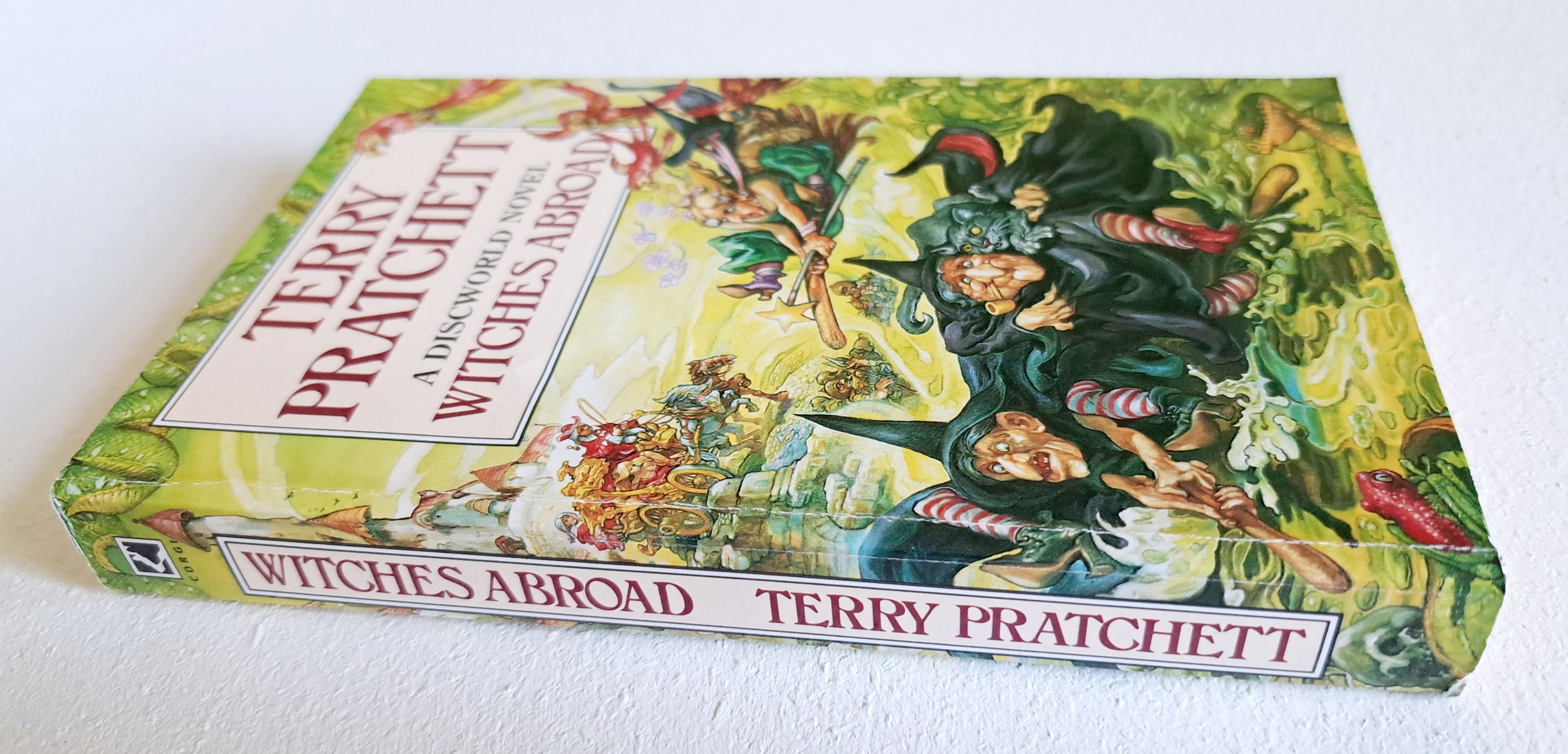
Mass-market paperback (mmpb)
The most common paperback book, about 4 x 7 inches (10 x 17 cm). Often used for mystery, science fiction and romance.
Memoir
Non-fiction. A self-written account of someone's experiences in a particular situation or a phase of their life.
Mint
A used book in perfect condition.
Misbound
When a book has been printed with pages in the wrong order, or upside down.
Modern firsts
First editions of books published roughly since 1901.
Morocco
A type of binding made from goatskin leather.
Movie tie-in edition
An edition published to coincide with the release of a film adaptation of the book. In the early days of cinema, these books were called photoplay editions.
Novelization
When a fictional book is produced using the plot of a movie.
Number line
A sequence of numbers on the copyright page that indicates a book's printing.
Octavo (8vo)
The typical size of a modern hardcover book - about 5 x 8 inches (12 x 20 cm) or 6 x 9 inches (15 x 22 cm).
Out-of-print (oop, op)
A book no longer being printed by its publisher.
Page
One side of a leaf. The front side is called the recto or obverse and the back is the verso or the reverse.
Paperback (pb, ppr)
A book with a paper cover. Also called a softcover.
Personalized recommendations
Automated book recommendations created from your online activity such as purchases and product pages you have visited.
Pictorial
A book with a picture on the cover.
Pirated edition
Any edition of a book printed without permission of the author.
Plates (pl, pls)
Full page illustrations printed separately from the text.
Pop-up book
A book with moving parts that stand up when the book is opened.
Points
Characteristics - such as a mistake in the text - which distinguish a particular edition from other editions.
Poor
A book condition description. A heavily worn used book. Perhaps missing pages, or stained, or starting to fall apart.
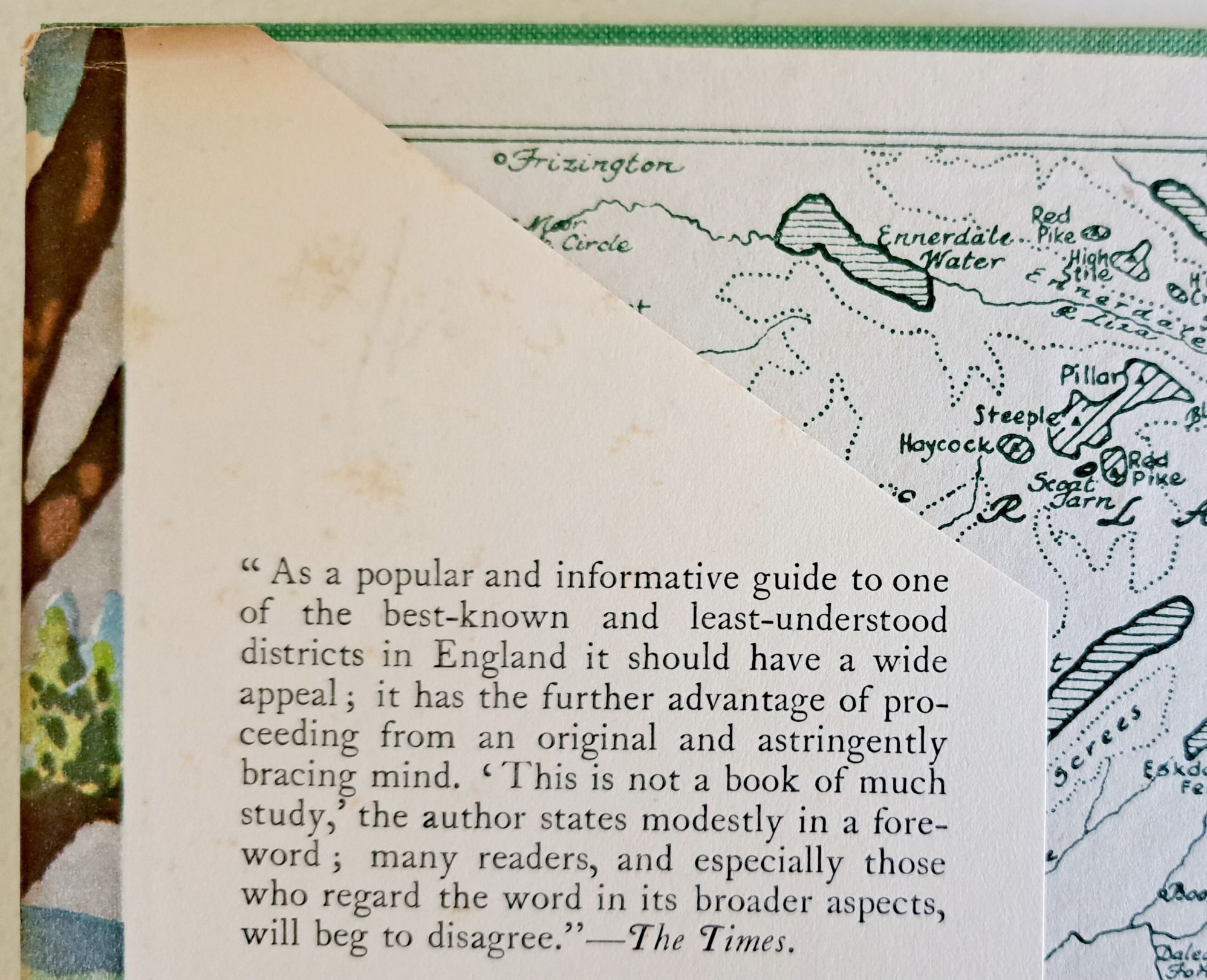
Price clipped (pc)
When the book's price has been cut from the corner of the dust jacket because it's a gift.
Print on demand (POD)
Modern digital printing technology. It allows books to be printed one by one, according to demand, rather than mass printed. Quality of PODs vary from exceptional to poor. Many works in the public domain are offered as POD editions.
Private press
A small press devoted to the production of finely printed books.
Privately printed
When the author has paid for the publication of a book.
Provenance
The history of ownership for a rare or collectible book.
Pseudonym
A fictitious name used by an author. J.K. Rowling writes crime novels as Robert Galbraith. Also called a pen name or nom de plume.
Pulp novels
Cheaply produced books, often offering sensational content, printed on low-quality paper. Commonplace between 1930 and 1960.
Quarter binding
A book with its spine covered in a different material than its covers. Books with quarter leather have a leather spine.
Quarto (4to)
A book sized between octavo and folio in size; approximately 11 to13 inches (28-33 cm) tall.
Reading copy
A book condition description. A used book with general wear.
Relevance
When a website attempts to order its search results with the most relevant results shown first.
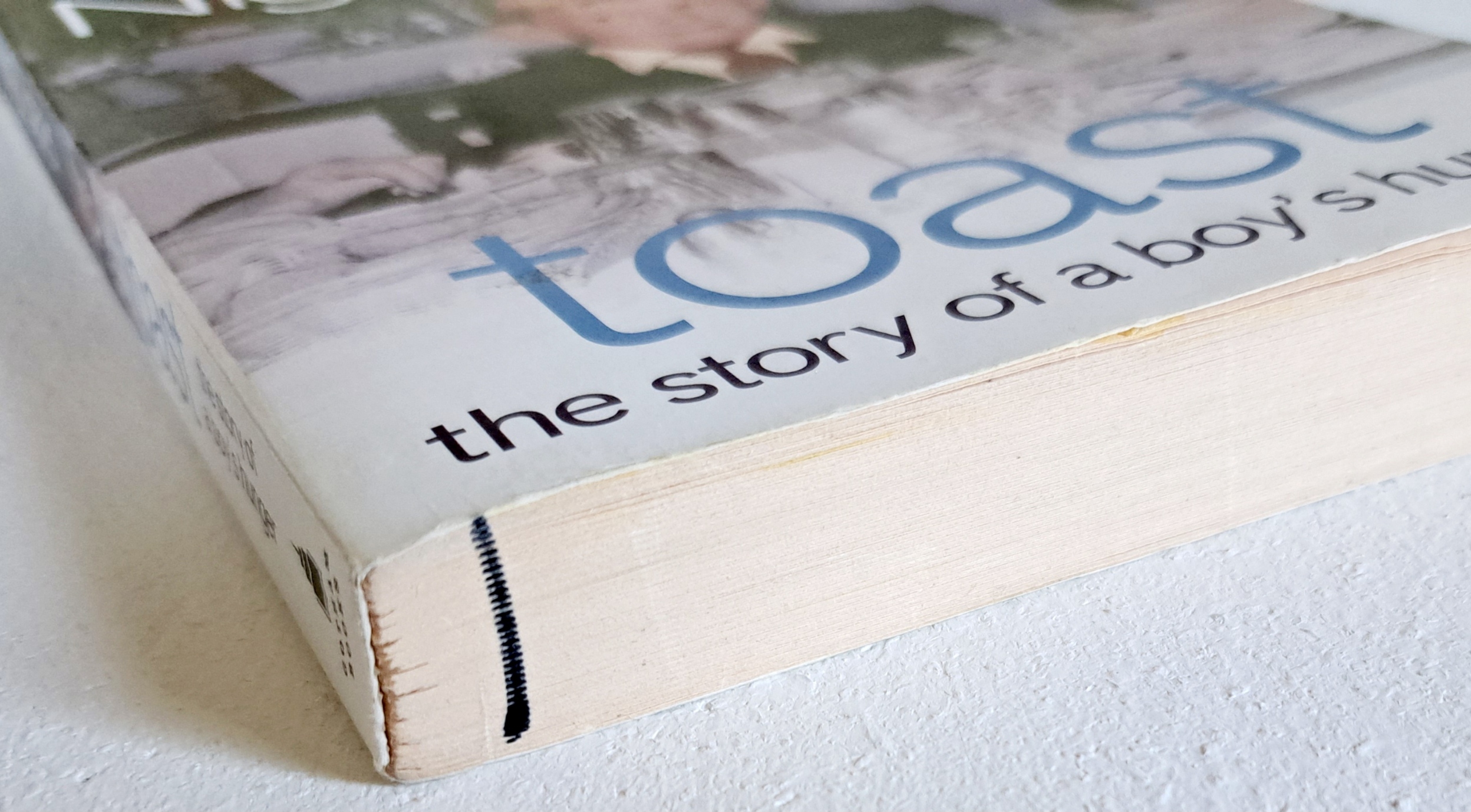
Remainder (rem) / Remainder Marks (rm)
When a book is no longer in demand, a publisher may sell remaining copies to "discount" booksellers who specialize in low-cost books. Remainders usually have a mark on the bottom edge such as a dot or a line.
Reprint
A subsequent print run of an edition of a book where the text is unchanged.
Rubbing
Wear caused by being placed on a bookshelf.
Self-published
When the author pays for the publication of the book. Vanity Press is a derogatory term for self-published books.
Seller-supplied image
An image of the actual book on sale taken by the seller offering the book.
Sextodecimo (16mo)
A small book about 4 x 6 inches (10 x 15 cm).
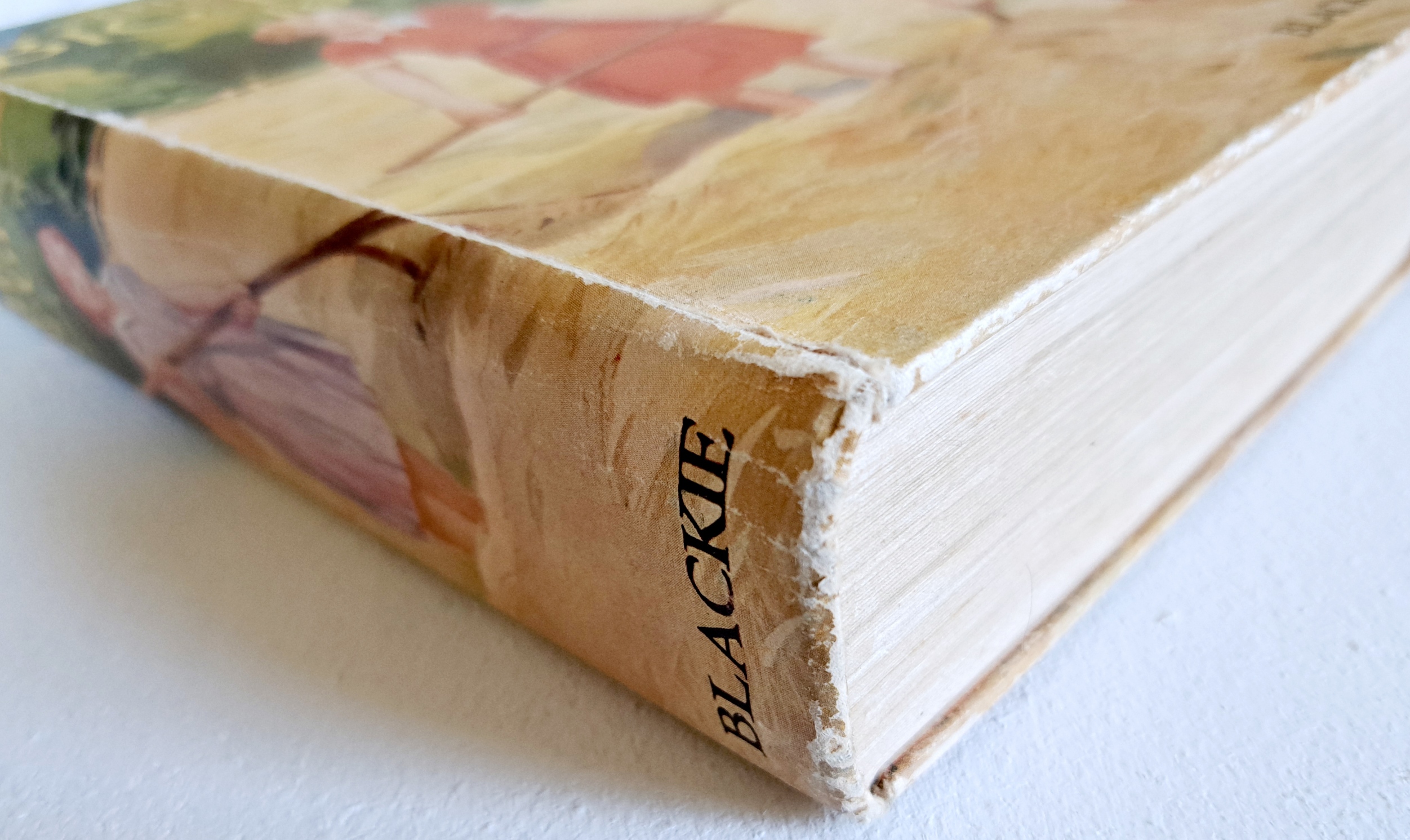
Shelf wear
A general term for wear that happens when a book is added and removed from shelves.
Signed
A book signed by its author or illustrator.
Slipcase
A protective case.
Soiling
Marks from dirt on the book.
Spine
The backbone of the book. Used paperback spines are often creased.
Spiral bound
A book held together by a metal or plastic spiral threaded through holes.
Stock image
A photo of the book's cover pulled from an online data catalog. The image does not show the actual item on sale.
Tissue
A thin, protective sheet that covers an illustration.
Tipped-in
When a piece of paper has been attached to the book. Signed bookplates can be tipped-in.
Title Page (tp)
A page, near the beginning of the book, that lists the title, author, publisher and date of publication.
True crime
A genre of books that detail accounts of actual crimes such as Truman Capote's In Cold Blood.
True first edition
The first appearance of a work in print.
Underlining
When text has been underlined to draw attention to it. Often found in used textbooks.
Variant
A book that differs from others of the same impression. Taschen is famous for producing variants of certain titles that have different covers.
Vellum
A thin pale sheet of leather used for binding or pages.
Very good (vg)
A book condition description. A used book with only small signs of wear.
Volume (vol)
A single book in a series (ie volume one of three).

Wrap-around band
The band of printed paper wrapped around the book for promotional purposes.
Young adult (YA)
Books aimed at readers who are 12 to 18-years-old with more complex or serious plots than children's literature.